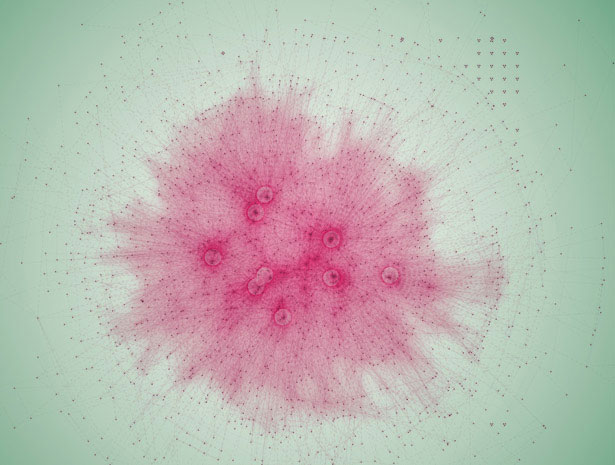
In a world driven by competition, businesses are constantly seeking unique ways to gain a competitive edge in the market. One undiscovered gem in this cause is a tool known as a relationship map. A relationship map visually represents the connections and networks within a business ecosystem. The beauty of a relationship map lies in its capability to provide a panoramic perspective of the complex web of relationships on a single visual plane. This article will delve into the versatile utility of a relationship map and how it can catalyze business growth. Keep reading to learn more.
The Concept and Structure of a Relationship Map

The concept of a relationship map is an essential tool for businesses looking to build and maintain strong relationships with their customers and partners. A relationship map visually represents the connections and interactions between various stakeholders of a business, including customers, suppliers, distributors, and other key players. By understanding and mapping out these relationships, businesses can effectively identify and manage their key contacts, track the flow of information and resources, and strategically plan their engagement with different stakeholders.
The structure of a relationship map typically includes a central node representing the business itself, with nodes branching out to represent different stakeholders. These nodes are then connected with lines or arrows to indicate the nature and strength of the relationship. For example, a solid line may represent a strong partnership or collaboration, while a broken line may indicate a more distant or casual relationship.
Having a well-structured relationship diagram provides several benefits for businesses. It helps identify key influencers and decision-makers within the network, allowing businesses to focus their efforts on building and nurturing these important relationships. It also helps identify potential gaps or weaknesses in the network, enabling businesses to seek new partnerships or collaborations to strengthen their position. Lastly, it allows businesses to visualize their network’s overall health and dynamics, enabling them to make informed decisions and allocate resources more effectively.
Driving Business Growth: The Utility of a Relationship Map
A relationship map has multifaceted applications, from fostering improved customer engagement to facilitating strategic decision-making. The map can provide a macrocosmic perspective of the net of contacts and relationships surrounding the business. It can depict these entities’ influence, loyalty, and power dynamics. Subsequently, businesses can decide who they need to focus on, who should be sidelined, and who should be nurtured more. Ultimately, such strategic insights aid businesses in driving growth.
Insights Gained From Mapping

One direct application of relationship mapping lies in sales and marketing. The map can illustrate the customer journey across different touchpoints, offering insights into their behavior, preferences, motivations, and pain points.
These insights can then be utilized to formulate personalized marketing strategies. By having a better understanding of their customers, businesses can tailor their marketing efforts to meet their specific needs and preferences. This can result in improved engagement and conversion rates as customers are more likely to respond positively to messages that resonate with them more personally.
Businesses can gain valuable insights into the customer journey across different touchpoints by using relationship mapping. This means that every interaction a customer has with the business, from the first point of contact to the final purchase and beyond, can be analyzed and mapped out. This mapping can clearly understand the customer’s behavior, preferences, motivations, and pain points.
For instance, if a relationship map reveals that a significant number of customers drop out of the purchasing process at a certain touchpoint, businesses can focus on improving that particular touchpoint to reduce customer churn. Similarly, if the map shows that a majority of customers are motivated by certain benefits or features of a product, businesses can highlight those attributes in their marketing campaigns to increase conversion rates.
Internally, a relationship map serves as a powerful tool for organizations to bridge the gap between employees and management. Visually outlining the role distributions within a company provides a transparent view of the organizational structure, fostering a sense of collaboration and teamwork. This map clearly illustrates the chain of command, allowing employees to understand reporting lines and hierarchies, leading to improved efficiency and streamlined communication within the team.
Moreover, an organizational relationship map proves beneficial in change management initiatives. It offers a clear view of potential influencers and blockers within the organization. Understanding these influential individuals becomes crucial when undergoing organizational changes or implementing new strategies. With a relationship map, companies can identify key stakeholders and effectively engage them to drive successful change.
In addition to fostering collaboration and aiding in change management, a map also enhances a business’s strategic capabilities. By visualizing the relationships and interactions between different roles and departments, companies can identify opportunities for cross-functional collaboration and innovation. This holistic view enables businesses to align their strategies with their internal resources and capabilities, leading to better decision-making and more efficient pursuit of organizational goals.
Why Relationship Mapping Software Is a Game Changer

Relationship mapping software is a game changer for businesses as it visually represents relationships and connections within their network. Traditionally, businesses have relied on spreadsheets, contact lists, and manual notes to keep track of their relationships. However, this method often fails to capture a professional network’s dynamic and complex nature.
With mapping software, businesses can easily visualize their network and understand the interconnectedness between individuals, organizations, and industries. This software allows for the creation of interactive maps that illustrate relationships based on various criteria such as importance, depth, and strength. This visualization not only helps in understanding the overall structure of the network but also enables businesses to identify key influencers, decision-makers, and potential opportunities.
Relationship mapping software allows businesses to effectively manage their relationships by providing a comprehensive overview of their network. This enables businesses to prioritize their efforts and allocate resources to the most valuable connections. Additionally, the software facilitates collaboration within teams by sharing relationship data and providing a holistic view of the organization’s network.
Furthermore, relationship mapping software can be a powerful tool for business development and sales teams. It helps in identifying new leads and prospects, as well as tracking the progress of existing relationships. The visualization feature provides insights into the strength of relationships, allowing teams to focus on nurturing and building connections that have the highest potential for success.
Looking Ahead: The Future of Relationship Maps
With the rising recognition of their strategic worth, relationship maps are set to be an integral part of businesses in the future. The evolution of sophisticated technologies and tools will augment their capabilities, making them more powerful, dynamic, and user-friendly. They may even go from being static displays to interactive, live representations of relationships.
In the near future, businesses could witness a rise in the prevalence and advantages of relationship mapping. Especially in the realm of sales and marketing, mapping customer journeys and relationships could be instrumental in developing exceptional customer experiences. The expansion of virtual workplaces necessitates a tool to keep track of the intricate web of relationships in such workplaces—this is precisely where a relationship map could come in handy.
These maps could also evolve to represent human relationships and relationships between different systems. This will especially be useful in the realm of digital transformation, where understanding system interdependencies is crucial. Relationship maps are positioned to be at the forefront of strategic decision-making tools in the business world.
Leverage Relationship Maps for Business Success

Relationship maps offer a holistic view of the complex network of interactions that define a business’s operations. They’re dynamic tools that adapt to business needs and provide insights that fuel effective strategic decision-making.
The information they capture, ranging from the nature and strength of relationships to trends and patterns, harnesses the power to promote a customer-centric approach, foster employee engagement, and catalyze business growth. The implementation of relationship maps is an investment well worth making for any growth-oriented organization.
Remember, while the road to creating an effective relationship map can be challenging, the eventual rewards in terms of strategic insights and growth potential make them an indispensable tool for organizations. So, make this strategic choice and utilize relationship mapping tools to navigate your journey toward business success.




